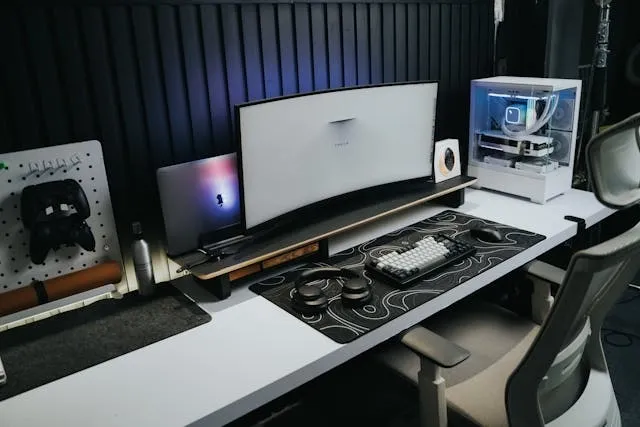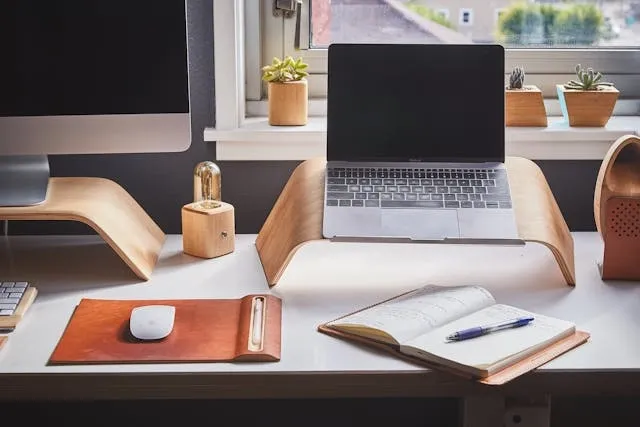Mouse Pad Material: Quality, Performance, Design Options, And Tips To Choose
Choosing the right mouse pad material is a key step for optimal performance and comfort. Whether you’re a gamer, designer, or office worker, understand what mouse pads are made of to enhance your experience.
In this guide, we explore various mouse pad materials to help you make an informed decision suited to your needs and preferences.

Key Takeaways
- Mouse pad materials have a big impact on performance and comfort.
- Common materials include rubber, fabric, plastic (good for speed and precision) and neoprene (ideal for flexibility and durability).
- Understanding what mouse pads are made of helps to select the right one for your needs.
- We supply high-quality custom mouse pads in a range of materials with options to personalize with branding or bespoke designs.
Table of contents
-
Mouse Pad Material
-
How Do I Choose The Right Mouse Pad Material?
-
What Is Neoprene Foam And Why Is It Used In Mouse Pads?
-
What’s The Difference Between Cloth, Plastic, And Hard Pads?
-
Does The Material Affect Gaming Or Office Performance?
-
What’s The Best Material For Speed And Control?
-
Does Mouse Pad Material Influence Noise?
-
How Does Thickness Impact Mouse Pad Comfort?
-
What Materials Are Used In Ergonomic Mouse Pads?
-
How Does Mouse Pad Material Affect Desk Appearance?
-
Which Materials Are The Easiest To Clean?
Mouse Pad Material
Understanding mouse pad materials is crucial for choosing the right pad for your needs. Among the many materials available to you there are rubber, fabric, plastic, and neoprene options.
Let’s look at them in more detail:
- Rubber: Provides a non-slip base for stability during use.
- Fabric: A good balance between speed and control - popular with gamers.
- Plastic: Known for its smoothness, allowing for quick movements and precision.
- Neoprene: A versatile combination of flexibility and durability.
Explore our custom neoprene mouse pads and other options to understand what mouse pads are made of and which material will work best for you.

What Material Are Mouse Pads Made Out Of?
Mouse pads are constructed from various materials, each of which makes its own contribution to the functionality. The surface layer often consists of fabric or plastic, which affects the glide and control of the mouse. The base layer, meanwhile, tends to use rubber or foam to provide cushioning and prevent slippage.
Neoprene is a popular choice for its flexibility and durability. Material choice has an impact on functionality, which is a key consideration in how to use custom-printed promotional items effectively. Understand what materials mouse pads are made of to select a pad that suits your specific needs, whether you are creating for yourself or for a product for your customers.
How Do I Choose The Right Mouse Pad Material?
Selecting the right mouse pad material depends on your needs and preferences. For instance, gamers might prefer a fabric surface for better control, while designers may opt for plastic surfaces as they offer greater precision.
Factors to consider include:
- Hand comfort
- Desk surface
- Mouse type
If you seek a good balance of durability and flexibility, you may find that neoprene is a good choice.
For a rich vein of options, work with us to create custom acrylic mouse pads and options with various other materials - we offer variety and personalization at great prices. Understanding what mouse pads are made of ensures you get pads that enhance performance and comfort.
Looking to create a rectangular mouse pad with a custom design?
Work with us to create custom rectangle mouse pads from a choice of materials and add your personalized design to get a branded or bespoke solution for desktops.
What Is Neoprene Foam And Why Is It Used In Mouse Pads?
Neoprene is a synthetic rubber known for its flexibility, durability, and resistance to wear and tear. With these properties, it is an ideal material for mouse pads. Neoprene delivers a comfortable cushioning effect that helps reduce wrist strain during extended use.
Custom mouse pads are among the most popular types of promotional products for business, so the durability of neoprene is great for ensuring long-term functionality. Additionally, the material is easy to clean and can be printed with custom designs, so it works excellently for personalized mouse pads.
What’s The Role Of Sheet Rubber In Mouse Pads?
Sheet rubber, like open-cell sponge rubber, is commonly used in mouse pads as it offers cushioning and a non-slip effect. It serves as a stable base for your mouse pad, preventing it from sliding during use.
The flexibility of this material offers comfortable wrist support, so it reduces fatigue during periods of extended use. Sheet rubber is also highly durable, and will maintain its shape and functionality for a long time.
Understand what material a mouse pad is made of to help in selecting a pad that offers the comfort and stability you need.
What’s The Difference Between Cloth, Plastic, And Hard Pads?
Mouse pads are available in various materials, each offering distinct benefits. Let’s look at cloth, plastic, and hard pads to explore how they differ from one another:
- Cloth: This provides a soft surface that offers better control and comfort. It is also a sustainable material, and there are many benefits of using eco-friendly promotional products.
- Plastic: This offers a smooth surface that allows for quick movements and precision - a common preference for designers.
- Hard: These tend to be made from materials like aluminium or glass. They provide a rigid surface for optimal speed and durability.
It can be helpful to explore what mouse pads are made out of to better understand what will work for your needs, such as gaming, design, and office environments.

Explore the benefits of custom aluminium alloy mouse pads
With our service, you can create a customized aluminium alloy mouse pad to enjoy durability, lightweight design, and smooth mouse operation on desktops.
Learn moreDoes The Material Affect Gaming Or Office Performance?
It is believed that mouse pad material impacts performance in both gaming and office applications. Let’s look at the commonly-held beliefs around this:
- Gaming: It is believed that cloth offers better control, while plastic surfaces provide speed and precision. These effects might be psychological, however, as research found no empirical evidence of this.
- Office: Neoprene or rubber pads offer comfort and durability for prolonged use.
What a mouse pad material is can have a big impact on the user experience. Whether your priorities are precise movements in gaming or comfort during long office hours, choose appropriately.
What Surface Is Best For Mouse Accuracy And Tracking?
For optimal mouse accuracy and tracking, the surface material plays a major role. Let’s look at the nuances between different mouse pad materials:
- Plastic: This offers smoothness, allowing for quick and precise movements that works well with high-DPI mice.
- Cloth: These surfaces offer optimal control, suitable for tasks that require precision.
- Neoprene: The perfect combination of flexibility and durability for a balanced experience.
Understanding what mouse pads are made of will help you choose a surface that gets the most out of your mouse’s performance. Accurate tracking and improved productivity are important in many scenarios.
What’s The Best Material For Speed And Control?
Generally speaking, the best mouse pad material for speed is plastic, because it offers a smooth surface that facilitates quick, precise movements. For control, a cloth surface has more resistance, so users experience enhanced precision.
Neoprene offers a great balance between the two, so it is a versatile choice for various tasks. These are things you need to think about when choosing the best promotional products for business - what do your customers or users need from their mouse pads?
Analyze what mouse pad material is and the benefits of different options to choose a pad that aligns with your specific needs.
Seeking a custom shaped mouse pad for novelty or practical purposes?
Take advantage of our option to create custom die cut shape mouse pads to get any shape you want, whether for novelty appeal or practical applications.
Does Mouse Pad Material Influence Noise?
Mouse pad material can make a big difference to the noise produced during use. Let’s look at what you are likely to experience with several different materials:
- Cloth: This tends to offer quiet use, absorbing sound and providing a soft surface.
- Plastic or hard: These may produce more noise as their surfaces are more rigid.
- Neoprene: This is the choice for balance, providing a cushioned surface that reduces noise.
What mouse pads are made of makes a difference to how they fit into your environment, particularly in a shared or quiet workspace where noise reduction is an important consideration.
How Does Thickness Impact Mouse Pad Comfort?
The thickness of a mouse pad affects how comfortable it is to use. There will be variations in wrist strain and control between thicker and thinner pads, so let’s look at the details:
- Thicker pads: These are often made with neoprene or foam, and they provide better cushioning to reduce wrist strain.
- Thinner pads: With these, you get a firmer surface, which is often preferred by users who need greater control.
The link between mouse pad material thickness and user experience is important to understand if you seek the right balance between comfort and functionality.
Create the ultimate gaming mousepad with your one personalized design
Our online service lets you create a custom gaming mouse pad for long gaming sessions, with a selection of materials available and custom size options for versatility.
Get startedWhat Materials Are Used In Ergonomic Mouse Pads?
Ergonomic mouse pads tend to incorporate materials like gel, memory foam, and neoprene to provide added wrist support and reduce strain. There are numerous studies into mouse ergonomics, exploring different designs, but mouse pad design is equally important.
- Gel pads: These conform to the wrist’s shape, offering comfort during extended use.
- Memory foam: This offers a soft, supportive surface that adapts to pressure.
- Neoprene: With its flexibility and durability, this offers long-lasting support during long hours.
There are many variations in terms of what mouse pads are made of, so explore what’s available to choose an ergonomic pad that enhances comfort and reduces the risk of repetitive strain.
How Does Mouse Pad Material Affect Desk Appearance?
Mouse pad material can have a significant impact on your desk’s aesthetics. Let’s take a look at what mouse pads are made of and how different materials affect appearance:
- Leather or aluminium: These options offer a sleek, professional look that works for minimalist setups.
- Cloth: Available in various designs and colors, these pads allow for personalization.
- Neoprene: Get these pads with customized prints for a personal touch.
Alternatively, you could get a custom rectangle tablecloth for your desk to give it a truly bespoke look, or use that in combination with your mouse pad to complement the workspace’s style and appearance.
What Material Looks Best For A Minimalist Desk Setup?
For a sleek, minimalist desk setup, leather, aluminium, and glass mouse pads all stand out for their clean lines and modern appeal. With these premium materials, you can complement a simple, uncluttered environment while offering durability and easy maintenance. Alternatively, if you prefer a softer pad, choose a slim cloth or neoprene option in neutral tones.
The best material for mouse pad aesthetics often balances subtle textures with visual simplicity. You could even complement the overall look with a custom neon sign or similar decorative piece with minimalist appeal.
A well-chosen mouse pad material can enhance your workspace elegance without compromising performance.
Which Materials Are The Easiest To Clean?
When it comes to maintenance, plastic and glass mouse pads tend to be the easiest to clean. A simple wipe with a damp cloth usually does the trick. Let’s look at what you need to do with a few other materials:
- Cloth: These are comfortable, but they tend to absorb oils and dust, so they require more frequent deep cleaning.
- Rubber/neoprene: These are relatively easy to clean, but it is important to keep them dry.
If hygiene and cleanliness are priorities for you, the best mousepad material is one that is water-resistant and non-porous. Understand how different mouse pad materials react to moisture to ensure long-term cleanliness.

How Does Material Impact Cost And Lifespan?
Mouse pad materials can have a big impact on both the cost and longevity of your products. Let’s examine the cost and lifespan of some common materials:
- Cloth and neoprene: These include our custom felt mouse pads - they are budget-friendly but may wear down faster with heavy use.
- Plastic and rubber: Mid-range in terms of price, these materials offer balanced durability.
- Leather, aluminium, and glass: These can be pricey but are likely to last for years.
If you’re wondering what a mouse pad is made of, consider whether you need long-term resilience or a short-term solution. The best material for mouse pad longevity combines strong wear resistance with comfort.
Frequently Asked Questions About Mouse Pad Material
What Is Mouse Pad Material Made Of?
This depends on what you choose. There are mouse pads made from cloth, or synthetic materials like neoprene, plastic, and rubber. You can also get pads made from leather, aluminum, glass, and more.
Which Materials Are Used In Specific Mouse Pad Types?
Gaming mousepads are often made from smooth plastics for speed, while office users may prefer padded cloth for comfort. Speed, precision, control, and ergonomics are all important for specific mouse pad types.